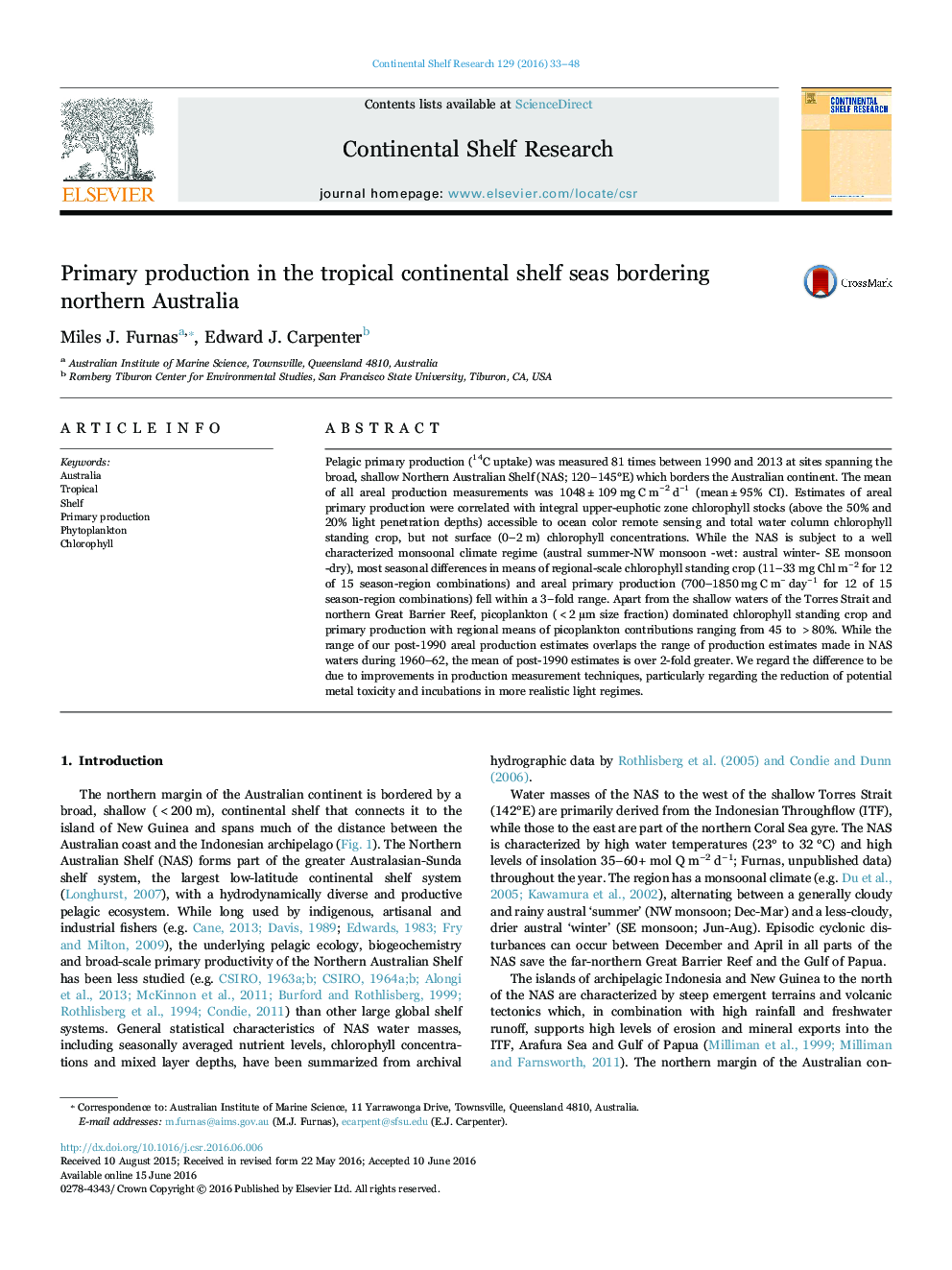| Article ID | Journal | Published Year | Pages | File Type |
|---|---|---|---|---|
| 4531512 | Continental Shelf Research | 2016 | 16 Pages |
•Modern (post-1990) primary production measurements across the northern Australian shelf (NAS).•Despite monsoonal forcing, no strong seasonality in NAS primary production.•Areal primary production correlated with chlorophyll visible to satellite sensors.•Mean modern 14C productivity >2 times higher than mean 1960s values.
Pelagic primary production (14C uptake) was measured 81 times between 1990 and 2013 at sites spanning the broad, shallow Northern Australian Shelf (NAS; 120−145°E) which borders the Australian continent. The mean of all areal production measurements was 1048±109 mg C m−2 d−1 (mean±95% CI). Estimates of areal primary production were correlated with integral upper-euphotic zone chlorophyll stocks (above the 50% and 20% light penetration depths) accessible to ocean color remote sensing and total water column chlorophyll standing crop, but not surface (0–2 m) chlorophyll concentrations. While the NAS is subject to a well characterized monsoonal climate regime (austral summer-NW monsoon -wet: austral winter- SE monsoon -dry), most seasonal differences in means of regional-scale chlorophyll standing crop (11–33 mg Chl m−2 for 12 of 15 season-region combinations) and areal primary production (700–1850 mg C m− day−1 for 12 of 15 season-region combinations) fell within a 3−fold range. Apart from the shallow waters of the Torres Strait and northern Great Barrier Reef, picoplankton (<2 µm size fraction) dominated chlorophyll standing crop and primary production with regional means of picoplankton contributions ranging from 45 to >80%. While the range of our post-1990 areal production estimates overlaps the range of production estimates made in NAS waters during 1960–62, the mean of post-1990 estimates is over 2-fold greater. We regard the difference to be due to improvements in production measurement techniques, particularly regarding the reduction of potential metal toxicity and incubations in more realistic light regimes.
